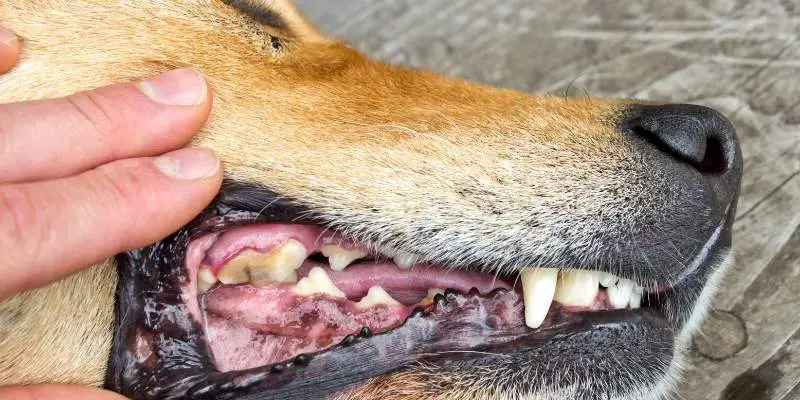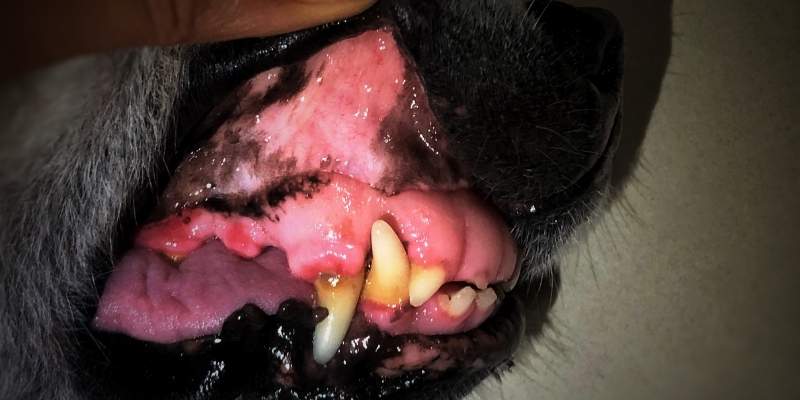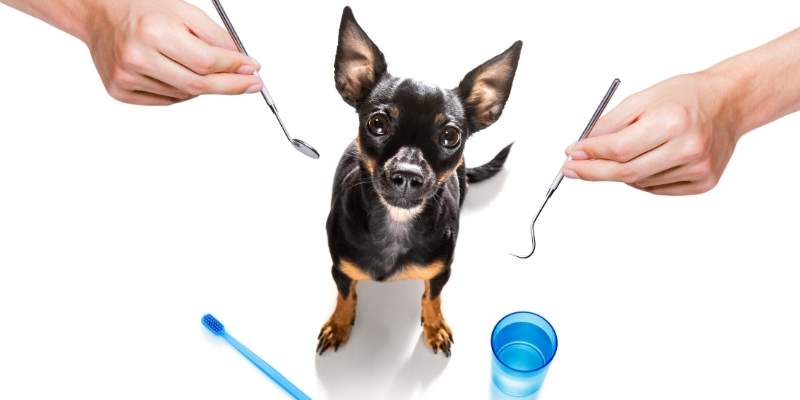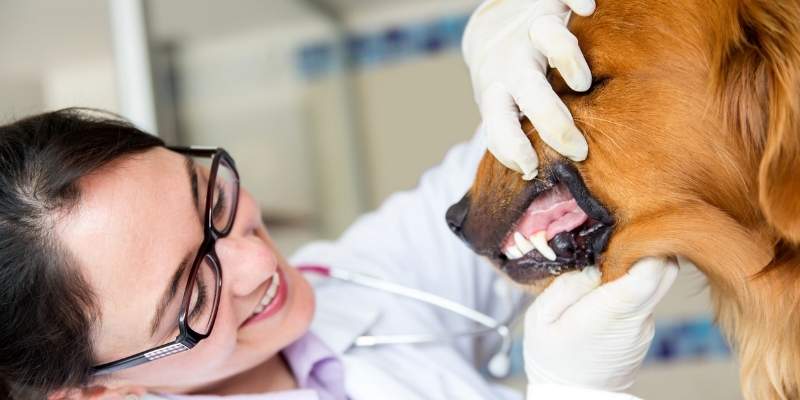According to a recent study, approximately 80% of dogs and 70% of cats develop periodontal disease by the time they are two years old. The most frequent and most widespread condition in our dogs is periodontal disease. In other words, how can we tell whether our dog or cat has gingivitis and periodontitis? There is no better place to start than our pet’s mouth. Are there indications of gingivitis (acute inflammatory gum tissue) or collection of plaque and calculus?
When the dog is awake, an oral examination of healthy dog gums is just a look inside the mouth. Everything that lurks under the gum line is hard to view, even in the calmest and most cooperative client. A pet owner can simply identify visible signs of dental illness. These examinations nevertheless provide valuable information that may be used as a guide for the future.
When a vet examines a patient’s mouth while awake, he pays particular attention to the gingiva (gums). Gingivitis and periodontitis are two of the most prevalent and probable issues that need to be treated. If you see any signs of gum disease in your pet, do not hesitate to take them to the vet immediately. Keep reading to learn about healthy dog gums vs. unhealthy.
Do you have a specific question about healthy dog gums vs. unhealthy? Then use the table of contents below to jump to the most relevant section. And you can always go back by clicking on the black arrow in the right bottom corner of the page. Also, please note that some of the links in this article may be affiliate links. For more details, check the Disclosure section at the bottom of the page.
Here's what we'll cover:
What do unhealthy dog gums look like?

Both foul breath and sore gums are indicators of gum disease in dogs. As the initial indication of periodontal disease, inflamed gums, or gingivitis, are primarily caused by plaque and tartar accumulation along the gumline. If gingivitis is not treated, it may lead to tooth loss. The same may lead to bone loss if left untreated for long.
In the early stages of unhealthy dog teeth, gingivitis causes inflammation and damage to the soft tissues and bone. The recession caused by gingivitis in dogs, tooth root exposure, bone loss, and tooth loss are consequences of periodontitis.
Periodontal disease may only be corrected in the earliest stage of dog gums swollen over teeth, known as gingivitis. Periodontal disease destroys both soft tissue and bone, making it almost impossible for either to be replaced. In addition, it increases your dog’s susceptibility to illness.
The heart, liver, and kidneys might be harmed if a periodontal infection enters your pet’s bloodstream. Therefore, always seek immediate treatment for your unhealthy dog gums. The better the result and the greater the likelihood of avoiding extractions, the sooner it is handled.
What to look for in dogs with unhealthy gums
Intensely red gums in dogs
When you find dog gums red around teeth, particularly along the gum line, it might be caused by one of the following:
- Gum inflammation is a typical symptom of dental illness.
- Some types of cancer
- Poisoning
- Overheating or heat stroke
Blue gums
The presence of blue gums might indicate serious health issues, such as:
- coronary artery disease
- pulmonary embolisms
- pneumonia
- choking
- diabetic hypotension
- inhalation and exhalation issues
- gums that are bright yellow.
What are dog gums supposed to look like?

The psychological effects of dog gum health have been linked to several studies. Therefore, it’s crucial to know what healthy teeth and gums resemble.
Unless your dog is in excruciating pain, it’s difficult to determine whether they have painful teeth or gums. Instead, you might find your furry friends licking their lips or cheeks. Also, there may be a decrease in hunger or other behavioral changes related to eating (such as eating only on one side of the mouth or only eating soft food).
Here are a few warning indications to watch out for:
- Aggressiveness or apathy
- Teeth grinding or mumbling in the mouth
- Food or water dishes with blood in them
- Modifications to play habits in puppies
- Pungent canine breath
Dogs with healthy gums and teeth are those that have clean gums. Gingivitis is when the gums become inflamed or bleed as they contact the teeth.
Feeding your dog an appropriate, meat-rich diet is the most critical preventive precaution you can take to keep their teeth and gums in good condition.
What do healthy dog teeth look like?

Normal dog gums look white during puppyhood, and they darken as they age. When puppies are six months old, they have 28 baby teeth that fall out and are replaced by 42 adult teeth. Healthy teeth don’t have any chips or cracks, and they don’t exhibit any indications of decay. However, your dog’s gum line may be stained yellow or brown, indicating poor dental health, which should be handled immediately.
The sign of healthy puppy gums is that the little one will engage in typical chewing activities without reluctance or apprehension. Puppies with healthy gums are not fussy eaters.
They’ll actively seek treats and toys like Dura Chew for dogs and TireBiter Flier to occupy their time in between meals. Dental health difficulties such as swollen red gums in dogs may be seen in dogs that have trouble eating. They will chew on one side of their mouths, struggle to pick up food, or have notable changes in chewing and eating habits.
Brushing your dog’s teeth has several advantages for both of you. Dogs have a natural tendency to chew, and it’s good for their healthy dog teeth and gums as well. Teething dogs might benefit from chewing toys like ropes, rawhide, bones, and chews, which work as a natural flosser by rubbing the gums.
Dogs that have access to appropriate-sized and shaped chew toys, such as Booda Bone, will be able to begin munching their way to healthier teeth. Toys and bones for aggressive chewers should be replaced as soon as they wear out. Make sure your dog’s teeth are not too sensitive by using rubber toys and other soft chewing materials.
We may spend a lot of time contemplating the health and well-being of our dog’s teeth. Those rosy pink gums are crucial in maintaining the position of those priceless pearly whites. As a unique window into the health and condition of a dog at any one moment, gums may be even more helpful as an indication of illness than teeth themselves. Therefore, if you are confused and wondering, “why my dog’s gums are black?” you may visit a vet for a checkup.
Thanks for the blog graphics: Canva.com

Thanks for the blog graphics: Canva.com
Doghint.com is a participant of several affiliate programs. The list includes (but not limited to) the following: VigLink, Refersion, ShareASale, and Amazon Services LLC Associates Program, an affiliate advertising program designed to provide a mean for us to earn fees by linking to Amazon.com and affiliated sites. Doghint.com does not intend to provide veterinary advice. All published articles are meant for informational purposes only and not substitute the professional veterinary consultation.


